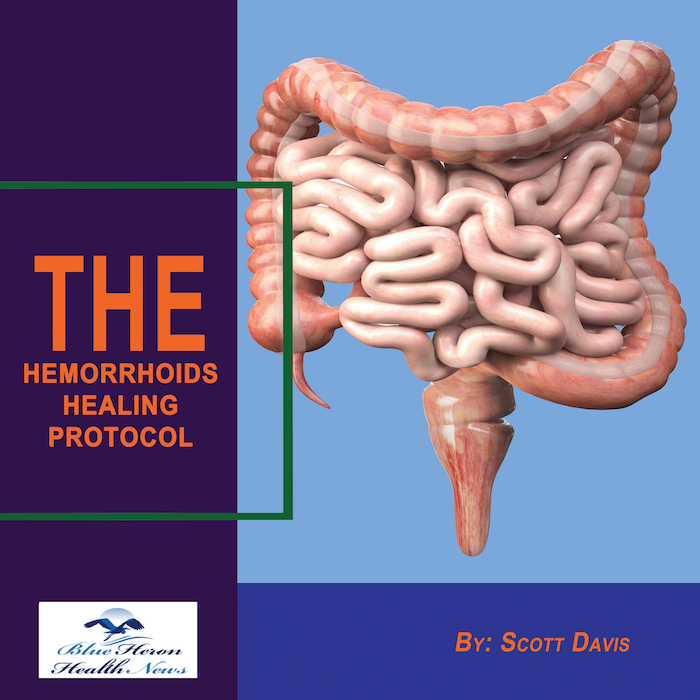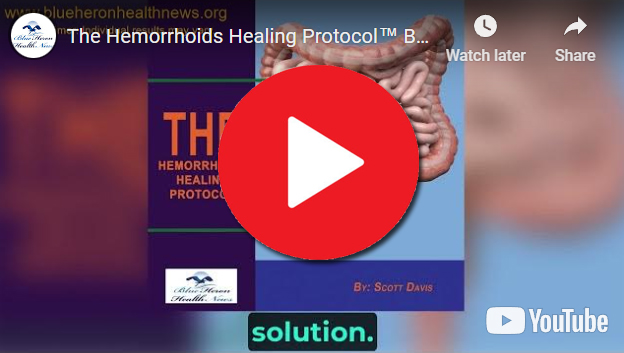
The Hemorrhoids Healing Protocol™ By Scott Davis Hemorrhoid healing protocol is a three-week online program that helps in treating and reducing hemorrhoids. It teaches gentle recipes and movements, natural and effective remedies that help in treating hemorrhoids.This program is not like the usual prescription medicines, it is a hell of a lot more than just those drugs. It focuses more on elevating the two main not so good habits that are connected to the Hemorrhoids. Overall the sole motive of this program is to remove the problem from its root instead of just treating the symptoms.
What is sclerotherapy for hemorrhoids?
Sclerotherapy is a minimally invasive procedure used to treat internal hemorrhoids, particularly those that cause bleeding or discomfort. It involves the injection of a sclerosing solution (a chemical agent) directly into the hemorrhoid. This solution causes the blood vessels within the hemorrhoid to shrink and collapse, leading to the hemorrhoid shrinking over time. Sclerotherapy is a widely used method for treating small to medium-sized internal hemorrhoids and is especially effective for bleeding hemorrhoids.
Here’s how sclerotherapy works and what to expect:
1. How Sclerotherapy Works
- Injection of a Sclerosing Agent: During the procedure, a doctor injects a sclerosing solution into the base of the hemorrhoid. The solution commonly used includes chemicals like phenol, quinine urea, or hypertonic saline.
- Effect on Blood Vessels: The injected solution irritates the blood vessels inside the hemorrhoid, causing inflammation and the formation of scar tissue. This leads to the collapse of the veins, cutting off the blood supply to the hemorrhoid.
- Shrinkage and Healing: Without a blood supply, the hemorrhoid shrinks and eventually shrivels up. Over time, the hemorrhoid either disappears or becomes much smaller, reducing symptoms like bleeding, itching, and discomfort.
2. The Procedure
- Preparation: Sclerotherapy is typically performed in a doctor’s office and does not require anesthesia. The patient may be asked to lie on their side with their knees drawn toward their chest.
- Anoscopy: To view the hemorrhoid, the doctor may insert an anoscope, a small tube that allows access to the hemorrhoid.
- Injection: Using a fine needle, the sclerosing agent is injected into the hemorrhoid’s base. This process is usually quick and may cause mild discomfort but is generally not painful.
- Multiple Hemorrhoids: If the patient has multiple hemorrhoids, more than one injection may be administered during the same session.
3. Post-Procedure Recovery
- Minimal Discomfort: Most patients experience little to no pain following sclerotherapy. Some mild discomfort or a feeling of fullness may occur, but this is temporary.
- Activity: Patients can usually return to normal activities immediately after the procedure, although heavy lifting or strenuous exercise should be avoided for a day or two.
- Healing Time: The hemorrhoids typically shrink over the next few weeks, and symptoms like bleeding or discomfort decrease during this period.
- Bowel Movements: Patients are encouraged to avoid straining during bowel movements, as this can aggravate hemorrhoids. A high-fiber diet, plenty of fluids, and possibly a stool softener are recommended to ensure smooth bowel movements.
4. Who Is a Candidate for Sclerotherapy?
- Early-Stage Hemorrhoids: Sclerotherapy is most effective for treating grade 1 and grade 2 internal hemorrhoids, which are internal hemorrhoids that may bleed but have not prolapsed significantly outside the anus.
- Non-Surgical Candidates: It is an ideal option for patients who want to avoid surgery or for whom surgery poses too many risks (due to age, health conditions, etc.).
- For Bleeding Hemorrhoids: Sclerotherapy is particularly effective for hemorrhoids that cause persistent bleeding.
5. Benefits of Sclerotherapy
- Non-Surgical: Sclerotherapy is minimally invasive and does not require surgical intervention, making it an attractive option for many patients.
- Quick and Simple: The procedure is quick, often taking just a few minutes, and it can be done in a doctor’s office without the need for hospitalization or anesthesia.
- Minimal Downtime: Patients can typically return to their daily activities immediately after the procedure.
- Effective for Bleeding: Sclerotherapy is especially effective at reducing or stopping hemorrhoidal bleeding.
6. Possible Side Effects and Risks
Sclerotherapy is generally considered safe, but like any medical procedure, it comes with some risks and potential side effects:
- Mild Discomfort: Some patients may experience mild pain or a feeling of fullness in the rectum after the procedure, but this usually subsides within a day or two.
- Bleeding: Minor bleeding may occur following the procedure, especially during bowel movements, but this is typically short-lived.
- Infection: Though rare, there is a slight risk of infection at the injection site. Signs of infection include fever, increased pain, or swelling and should be addressed by a healthcare provider.
- Reaction to the Sclerosing Agent: Allergic reactions to the sclerosing agent are rare but possible. If a reaction occurs, it may cause itching, swelling, or irritation in the area.
- Recurrence: Hemorrhoids can recur after sclerotherapy, especially if lifestyle factors that contribute to hemorrhoids (e.g., constipation, straining, or prolonged sitting) are not addressed.
7. Effectiveness of Sclerotherapy
- High Success Rate for Early-Stage Hemorrhoids: Sclerotherapy is highly effective in treating early-stage hemorrhoids, especially those that cause bleeding. It is less effective for larger, more advanced hemorrhoids (grade 3 or 4), which may require more invasive treatments.
- Multiple Treatments: While some patients experience relief after a single session, others may require multiple sclerotherapy treatments for complete symptom resolution.
8. Alternatives to Sclerotherapy
Depending on the severity of the hemorrhoids and individual patient preferences, other treatments may be considered, such as:
- Rubber Band Ligation: Involves placing a rubber band around the base of the hemorrhoid to cut off its blood supply.
- Infrared Coagulation: Uses infrared light to coagulate and shrink hemorrhoidal tissue.
- Hemorrhoidectomy: Surgical removal of hemorrhoids, often reserved for severe or persistent cases (grade 3 or 4 hemorrhoids).
- Stapled Hemorrhoidopexy: A procedure that uses a circular stapler to remove excess hemorrhoidal tissue and reposition the remaining tissue inside the rectum.
9. Preventing Hemorrhoid Recurrence
After sclerotherapy, it is important to prevent further strain on the rectal veins to avoid recurrence of hemorrhoids:
- High-Fiber Diet: Increasing dietary fiber (fruits, vegetables, whole grains) can help soften stools and reduce the risk of constipation, a major contributing factor to hemorrhoids.
- Hydration: Drinking plenty of water helps keep stools soft and promotes regular bowel movements.
- Avoiding Straining: Patients should avoid straining during bowel movements, which increases pressure on the rectal veins.
- Physical Activity: Regular exercise can improve digestion and prevent constipation.
Conclusion:
Sclerotherapy is a safe, effective, and minimally invasive procedure used to treat internal hemorrhoids, particularly those that cause bleeding. By injecting a sclerosing agent into the hemorrhoid, the blood vessels shrink, leading to symptom relief over time. This procedure is ideal for treating early-stage hemorrhoids, offering quick recovery with minimal discomfort. While generally effective, some patients may require multiple treatments, and lifestyle changes are essential to prevent recurrence.
The Hemorrhoids Healing Protocol™ By Scott Davis Hemorrhoid healing protocol is a three-week online program that helps in treating and reducing hemorrhoids. It teaches gentle recipes and movements, natural and effective remedies that help in treating hemorrhoids.This program is not like the usual prescription medicines, it is a hell of a lot more than just those drugs. It focuses more on elevating the two main not so good habits that are connected to the Hemorrhoids. Overall the sole motive of this program is to remove the problem from its root instead of just treating the symptoms.
